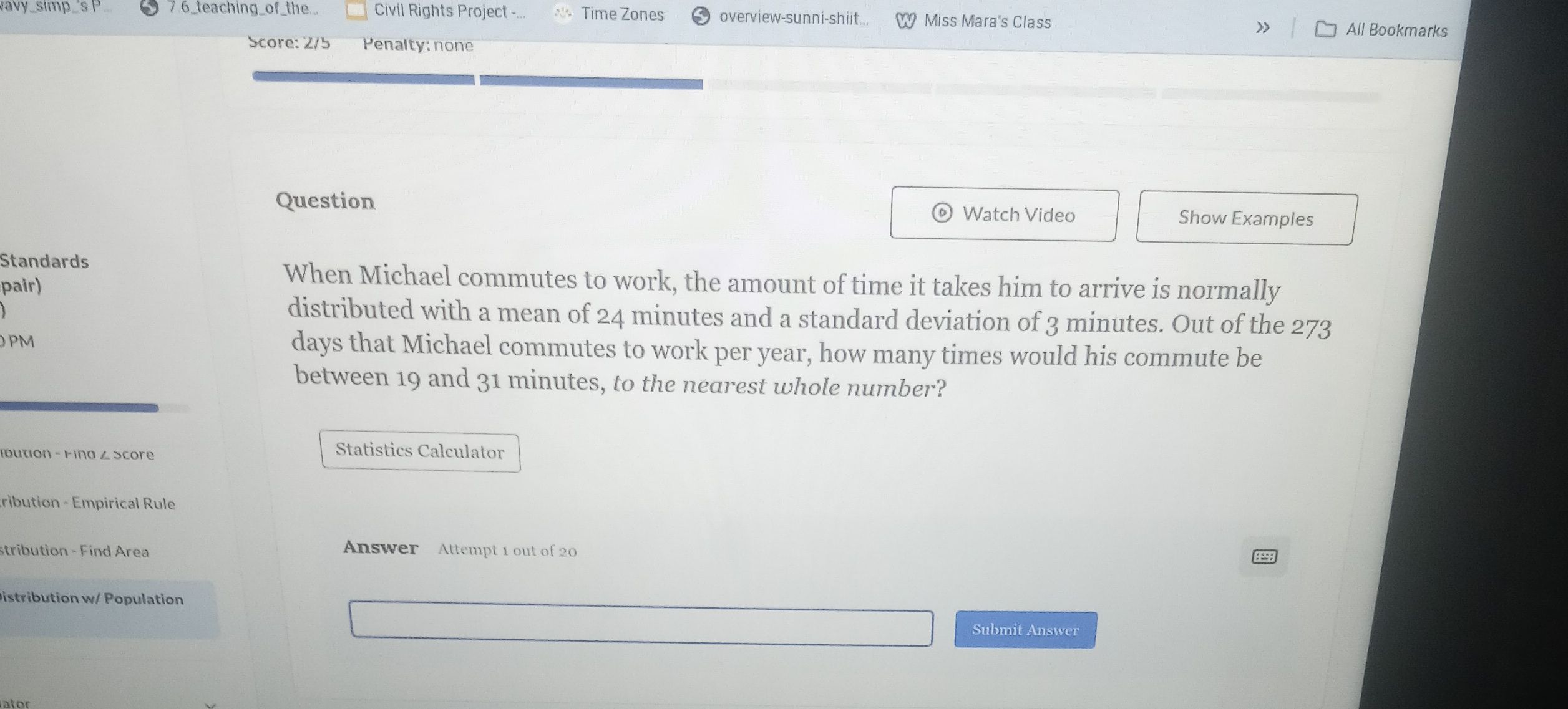AI tutor
Welcome to Bytelearn!
Let’s check out your problem:

When Michael commutes to work, the amount of time it takes him to arrive is normally distributed with a mean of minutes and a standard deviation of minutes. Out of the days that Michael commutes to work per year, how many times would his commute be between and minutes, to the nearest whole number?
Full solution
Q. When Michael commutes to work, the amount of time it takes him to arrive is normally distributed with a mean of minutes and a standard deviation of minutes. Out of the days that Michael commutes to work per year, how many times would his commute be between and minutes, to the nearest whole number?
- Identify Parameters: Identify the parameters of the normal distribution. The mean () is minutes, and the standard deviation () is minutes.
- Convert to Z-scores: Convert the commute time range to z-scores.To find the z-score for minutes: To find the z-score for minutes:
- Use Normal Distribution Table: Use the standard normal distribution table to find the probabilities corresponding to the z-scores.The probability of a z-score being less than is approximately .The probability of a z-score being less than is approximately .
- Calculate Probability Range: Calculate the probability of the commute time being between and minutes.Subtract the probability of the commute being less than minutes from the probability of the commute being less than minutes.Probability between and minutes =
- Calculate Number of Days: Calculate the number of days Michael's commute would be between and minutes.Multiply the total number of commuting days by the probability found in Step .Number of days =
- Round to Nearest Whole Number: Round the result to the nearest whole number.The number of days Michael's commute would be between and minutes is approximately days when rounded to the nearest whole number.
More problems from Interpret measures of center and variability
QuestionGet tutor help
QuestionGet tutor help
QuestionGet tutor help
QuestionGet tutor help
QuestionGet tutor help
QuestionGet tutor help
QuestionGet tutor help
